Business-to-business (B2B) marketing is aimed at a business rather than an individual shopper. On the flip side is business-to-consumer (B2C) marketing, which is aimed at individual shoppers (consumers). For example, a company that sells website themes to small businesses is a B2B company, while a company that sells headphones to consumers is a B2C company.
B2B marketing caters to the challenges, interests and needs of people who are buying for their company. It helps to think of the company, not the person, as the customer.
Some articles about B2B marketing say that freelancers and solopreneurs are technically in a B2C audience, but I disagree. Freelancers and one-man-show business owners have to make many of the same business decisions as larger companies, especially when it comes to how to spend their resources. Even if a professional is operating under their own name, they still run their career as a business, which puts them in the B2B category.
There are a lot of ways that B2B and B2C marketing can intersect, too. For example, one person can be both a B2B and B2C customer depending on what and why they’re making a purchase. The way you market to that person will be different based on what you’re selling, though. When planning your B2B marketing strategy, you have to think about how your audience differs from consumers. B2B marketing has its own audiences, communication preferences and promotion strategies.
What B2B Customers Want and What to Expect From B2B Marketing
B2C customers want to feel something or be entertained. B2B customers, on the other hand, are more concerned with making the most logical business decision and getting a good return-on-investment (ROI). B2B customers want to know how your business can help their business improve, and they care about the money, resources and time they’ll need to spend to get it. The B2B customer has a longer buyer’s journey than the B2C customer, and there are also more decision-makers involved in B2B purchases.
It’s not easy to get a B2B audience to act. They take a long time to make decisions, and they don’t buy on impulse. If they already have a business solution that you’re competing with – like if they use a project management tool and you promote one you believe is better – it’ll take a lot to convince them to take the time to make the switch, even if they’ll benefit in the long run. B2B buyers take their time when researching options.
5 Types of B2B Marketing
There’s not much difference in the types of marketing that B2B vs. B2C companies use, but how they use those marketing outlets will differ. Let’s go over five major types of B2B marketing.
Content Marketing
Business decision-makers prefer to get their information from content, like a long-form article, rather than an ad. That means that some of your resources, even most of them, should go toward creating content instead of advertising. Ads may still be part of your strategy, but they shouldn’t be all of it.

Content marketing doesn’t usually interrupt a customer’s day like an ad does. Instead, content delivers value by informing customers of ideas or strategies that are important to them and their business success. Professionals should always have time for that, even if they have to bookmark an article and return to it later.
Leadpages creates all types of content, including blog posts, customer stories, a podcast and a webinar. They’ve varied the resources they offer customers, giving them the choice of what type of content works best for them. Here are just some of the company’s boards on Pinterest, which point to how varied their content is.
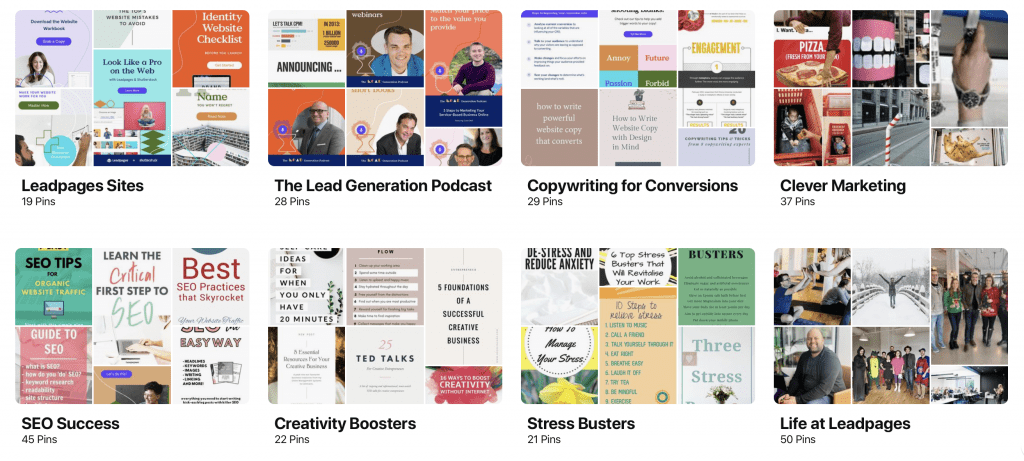
Email Marketing
Email marketing should be part of your B2B marketing strategy. Newsletters are great for content marketing, and you already know your audience is checking their email at least once a day because most professionals do a lot of business via email. With a drip campaign, you can build trust and increase engagement over time, which works well with a B2B audience because they take a longer time to make decisions anyway.
You can also use analytics and segmentation to send targeted emails to subscribers based on their location in the buyer’s journey. For example, if they’ve shown interest in your business, like clicking a link to a product page but not going through with a purchase, you can connect with them and provide the information you think will help them take the next step, like answers to FAQ or a discount code.
Don’t be afraid of sending cold emails, either. They may feel awkward, but they’re pretty effective, so long as they’re crafted right and you understand the recipient’s needs.
PPC Campaigns
B2B customers often know what they’re looking for, like a new project management system, a different way to process payments or upgrades for their website. Pay-per-click (PPC) advertising helps get your products or services in front of the customers who are searching for exactly what you offer.
Instead of just advertising your products or services, though, also use PPC ads to lead potential customers to your blog or social media content, or to information about your company’s purpose. Even though B2B customers may know what they want, you still have to win them over first. Overall, it’s best to niche down when creating PPC ads and show potential customers why they should trust you, not just what they can buy.
Also, while B2B customers often know what they need, they may not know exactly how to get it. For example, they may be looking for a specific feature that their current tool doesn’t include, so you’d want to promote your product’s main features instead of the entire product. Or, they may be looking for a new service that’s closer to where they live, which is where location-specific ads will help.
Social media is best for building brand awareness. When it comes to B2B marketing, social media isn’t where you’ll convert your leads. It’s where you can gather leads, though, or do any of the many activities required at the start of the buyer’s journey.
With social media, you’re able to showcase your company’s personality and create an authentic, humanized business, which is what today’s customers need to see. Social media also makes it easy to share your brand’s content and showcase your industry expertise.
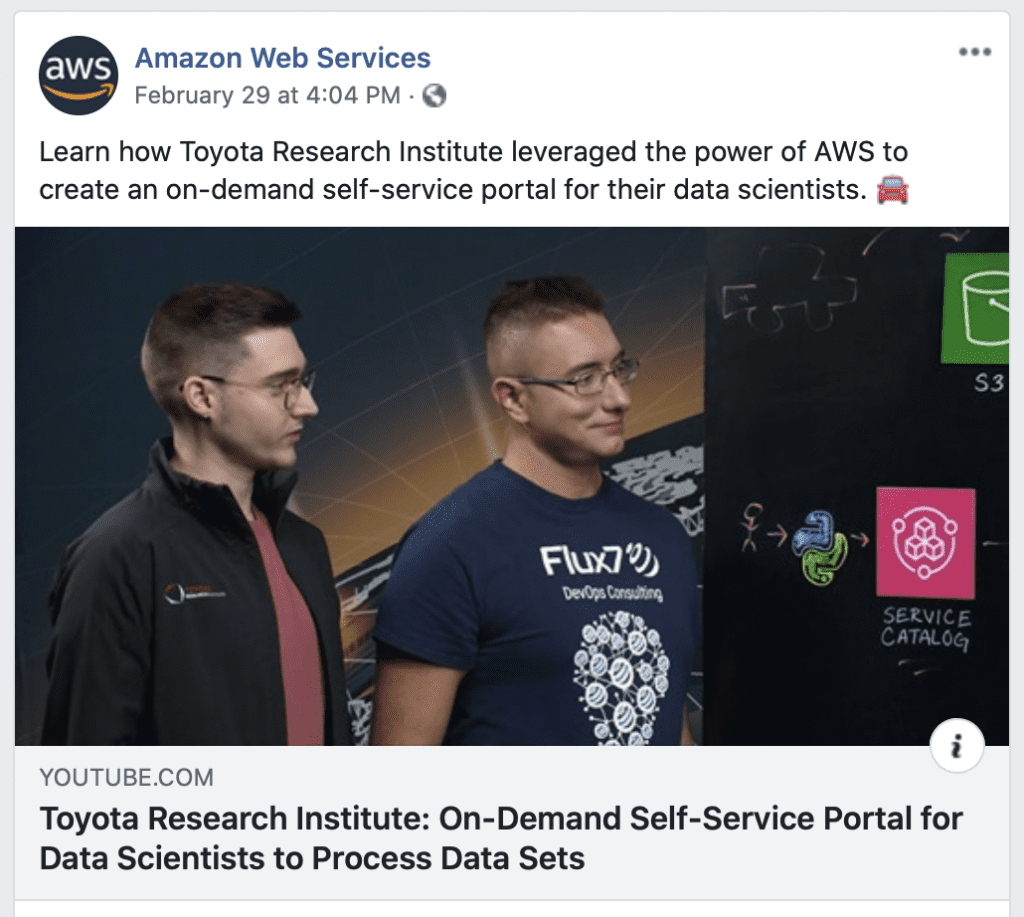
Additionally, social media is great for engaging with customers. There are all sorts of ways for businesses and customers to chat on social media, like sending DMs, broadcasting live or asking for feedback via polls.
Website and SEO
Every B2B company should have a website. B2B customers are going to do a lot of research on their own before reaching out for more advice, and they’ll start on your website. The more educational content you can offer, the more engaged visitors will be, which can bring in leads that will eventually convert. And with the right design, your website will shape your audience’s perception of your business and make it easier for them to recall your company name.
The GoToMeeting website homepage knows that visitors may not all be at the same stage and that the website has to cater to that. The company does know the three most common stages of its customers, though, and helps them go where they need to. This easy navigation is necessary to get visitors to take the next step.
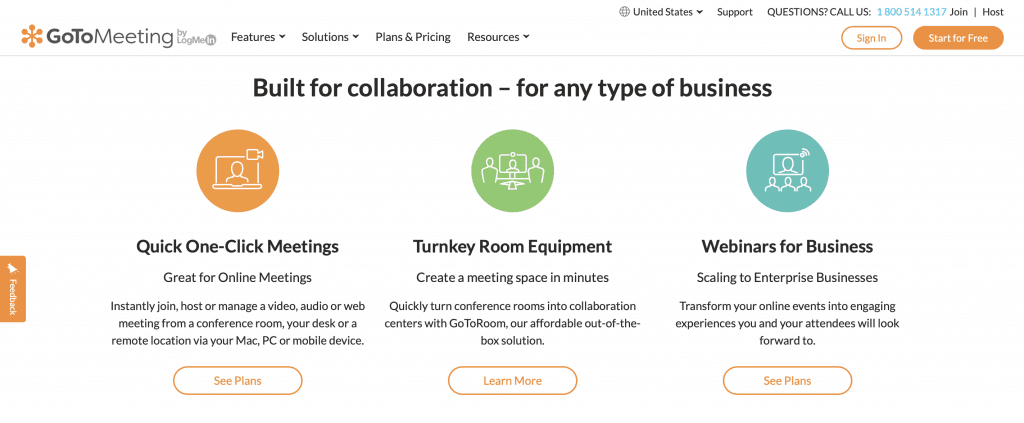
You can make your website as engaging as you want, but if customers can’t find it, all that great content and design won’t do you any good. To make your website discoverable, make sure to employ SEO tactics. That includes using keywords in your copy, adding alt text to images, filling out metadata fields, optimizing the site speed, link-building and more.
5 Must-Know B2B Marketing Tips
You know what outlets you should be using to market your B2B business, but how should you use them? Here are five tips to get you started.
1. Appeal to the buyer’s emotion
I know I said that B2C consumers are the ones who buy based on emotion, but there are times when a B2B buyer will also be encouraged to make a purchase if you cater to their emotional side. For example, if your business caters to freelancers, your audience is intertwined in a very personal way with their job. Appealing to that level of commitment and the “I’m married to my job” vibe a lot of freelancers have can push a sale forward.
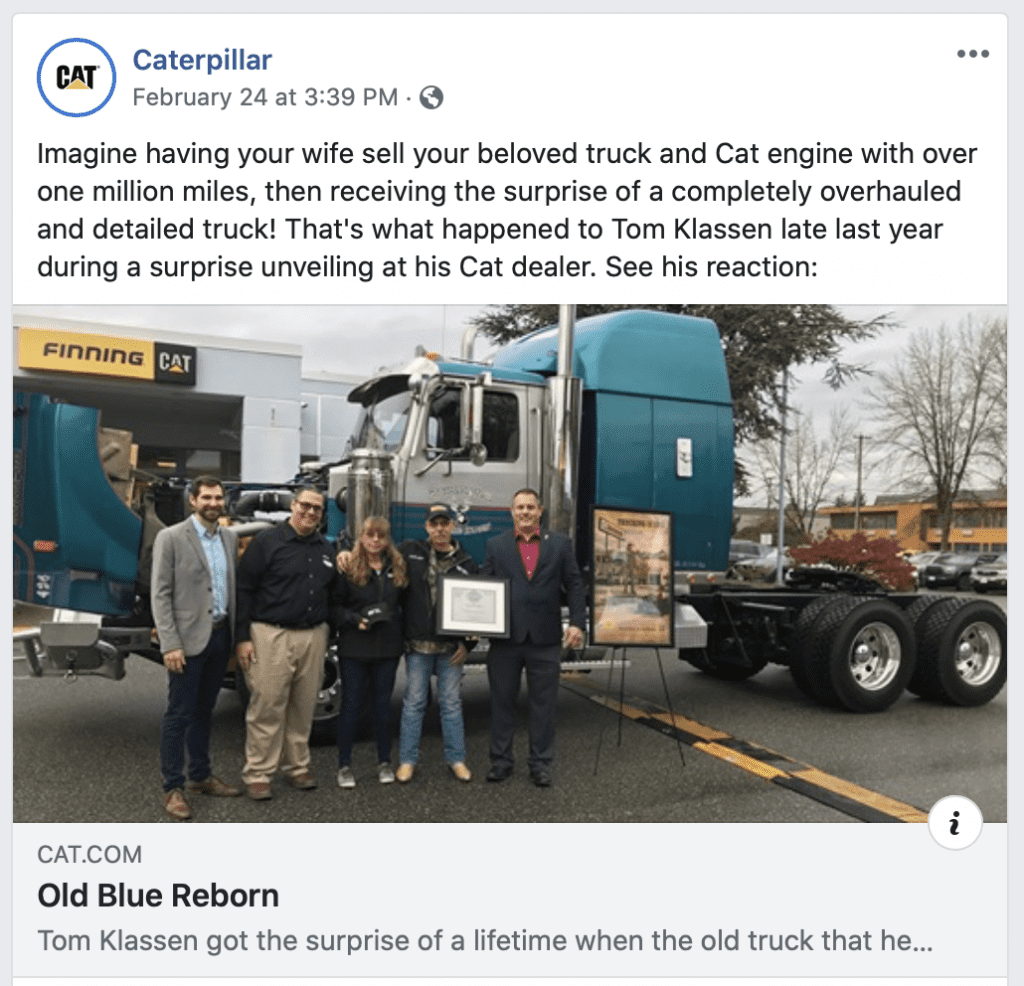
2. Tell a story
This is especially important if your product or service is difficult to explain. Your customers may not know a thing about AI or cryptocurrency, even if they’d benefit from related technology. Shape it in a way that they can understand and visualize.

3. Provide context
If there’s something that’s difficult for people to imagine, put it in context. For example, if you want to state a numerical fact in your content or ad to showcase how well you do what you do, frame it in a way that your audience can understand. Show what 20 tons or 20,000 people looks like.
You may put the CTA in the email two or three times, like at the beginning, in the middle and at the end, but the actual request and action should be the same. If you mix it up and ask people to do a few different things, they won’t know what to do first, and they may default to doing nothing at all. Help your subscribers avoid analysis paralysis by giving them just one task to complete.
5. Use standout media
Grab your audience’s attention with bold words, colors or visuals. Also, find a way to incorporate video. Go as professional or as raw as you need to based on your video-making and video-editing capabilities, but get it in there somehow. Video gets the most engagement when compared to other types of media.
MailChimp They also make a point to use fun graphics and videos, which are aligned with the company’s branding. When you’re ready to make a decision about which email marketing service to use or dive deeper into, MailChimp will be front-and-center in your mind, and they didn’t have to be overly sales-y to do that.
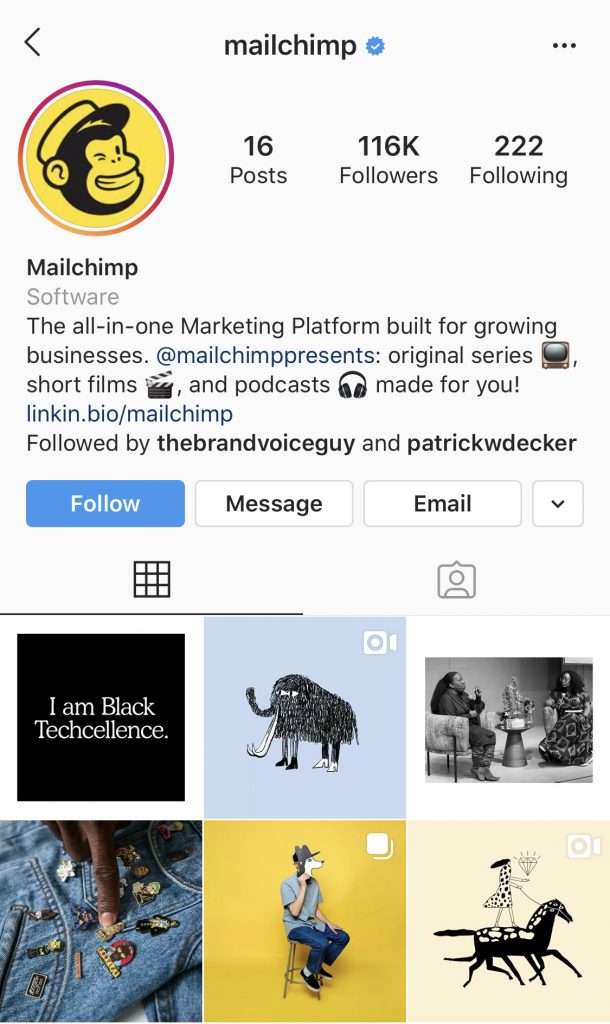
Planning and Launching a B2B Marketing Campaign
While the actual marketing methods you’ll use for a B2B strategy will differ from those of a B2C strategy, the actual planning and management steps are pretty similar. Let’s go over them briefly, though, so they’re fresh in your mind.
1. Perform market research
It’s impossible to create an effective B2B marketing campaign if you don’t know who your audience is, the competing companies that are already serving them and what the industry needs most (and doesn’t need more of). This stage involves audience discovery, competitor analysis and market research. It’ll help you develop your objective and give you a baseline to compare your results against.
2. Map out the B2B marketing campaign
Map out your B2B marketing campaign. This will eventually be shared with the entire team, preferably in an online space that can be updated and synced in real-time so there aren’t conflicting versions of the schedule. There are a few steps here:
- Write down each task that needs to be completed, no matter how small. As you write each one down, categorize it (blog, email, social media, etc.).
- Decide who will be responsible for each task and when it has to be due by.
- Add everything to a marketing calendar. There are a lot of project management tools out there to help with this, like Asana, CoSchedule, Trello, etc.
You may also find our article about How to Create an Editorial Calendar That Flawlessly Executes Your Content Marketing Strategy helpful.
3. Write a creative brief
Your creative brief will cover what you’re going to do, how you’ll do it and who your target audience is. Team members and your stakeholders will be able to understand the campaign, the purpose of it and what their roles are. Your creative brief should include:
- Summary: Brief overview of the campaign’s goals and the creative concept
- Resources: Your budget, the staff you’ll require and your projected timeline
- Goals and Measurement: How you’ll measure the campaign’s progress and success
- Campaign Timeline: In addition to the main timeline in the Resources section, your campaign timeline should break down each aspect of the campaign and show when it will launch and end
Add anything else you think should be included or that will be helpful when you refer back to the brief after a few weeks.
4. Get the team together
Everyone who is involved in the campaign should get together to go over it. This is when the campaign will officially kick-off. People can ask questions and get clarification; everyone will know what they have to do and when it’s due by; and the entire team will feel unified by the one campaign they’re working on together.
There’s so much more to creating, launching and managing a marketing campaign. You may want to check out our article about Creating Your First Digital Marketing Strategy, too.
Final Thoughts About B2B Marketing
Whether you’re talking about B2B marketing or B2C marketing, one thing remains the same: your audience is what matters most. Both types of marketing have to communicate the product’s benefits – the benefits, not just the features – and how that will solve the buyer’s problem.
It’s a misconception that B2B marketing has to be boring. There are plenty of creative and innovative B2B companies that know exactly how to reach a dynamic audience. With the right marketing strategy, you can even reach new audiences you haven’t tapped into yet.
If blogging is going to be part of your B2B content marketing strategy, you’ll want to check out these blogging trends for 2020.
Featured Image via Golden Sikorka / shutterstock.com






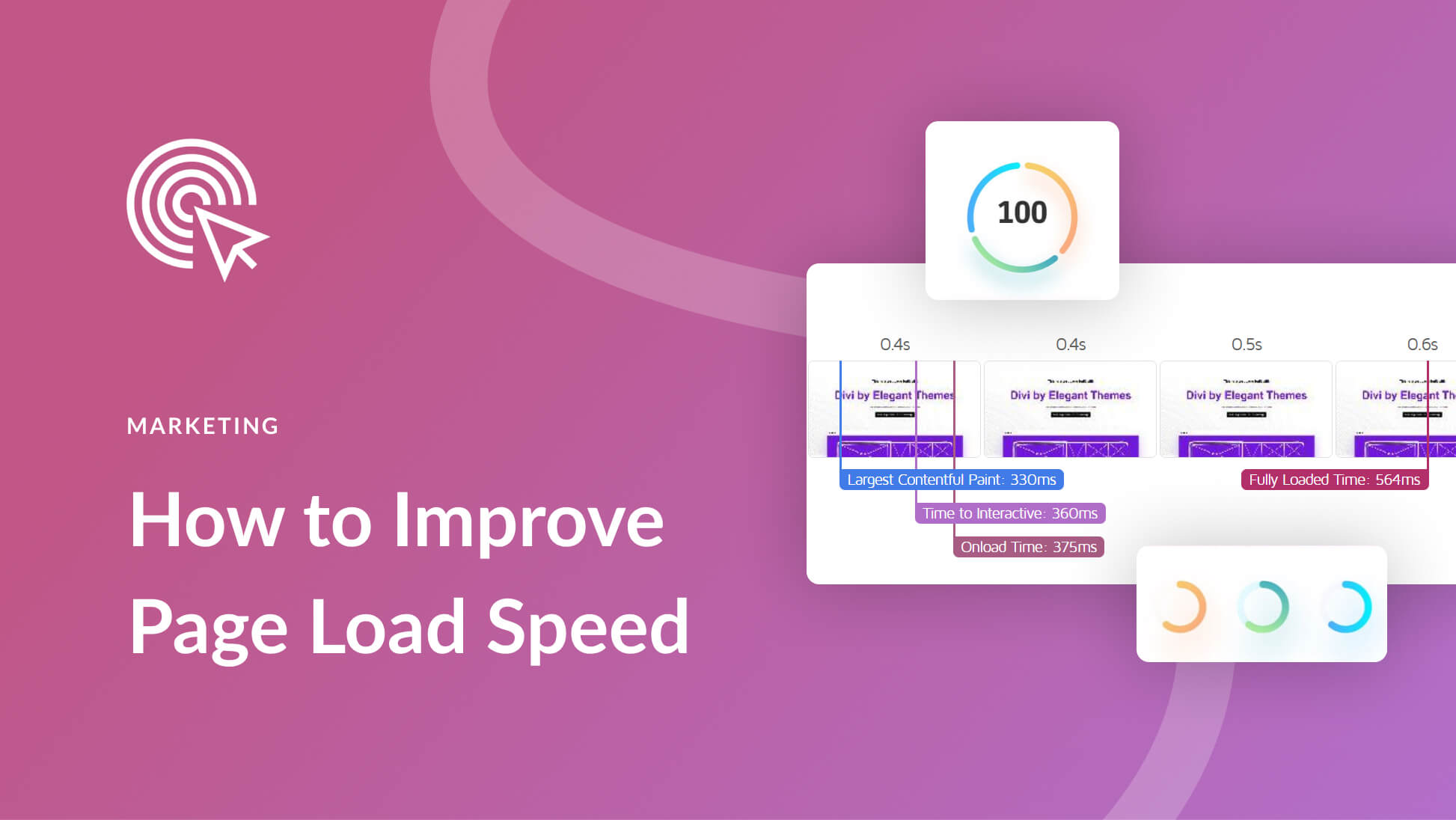


Leave A Reply